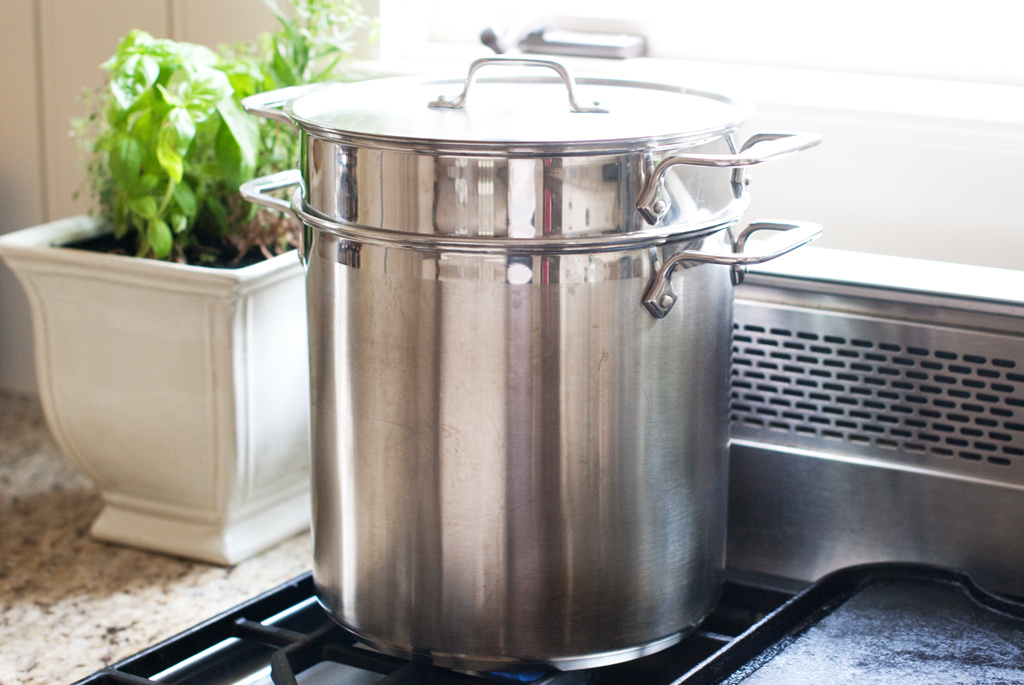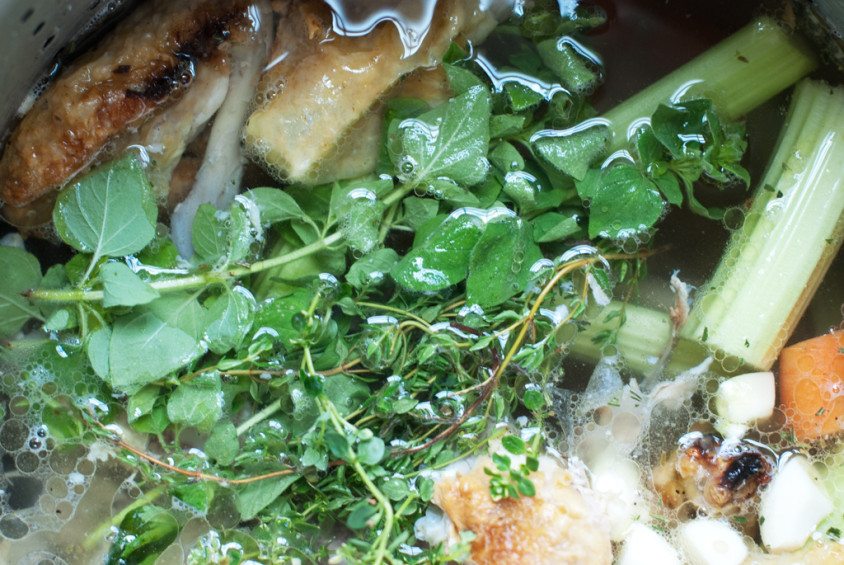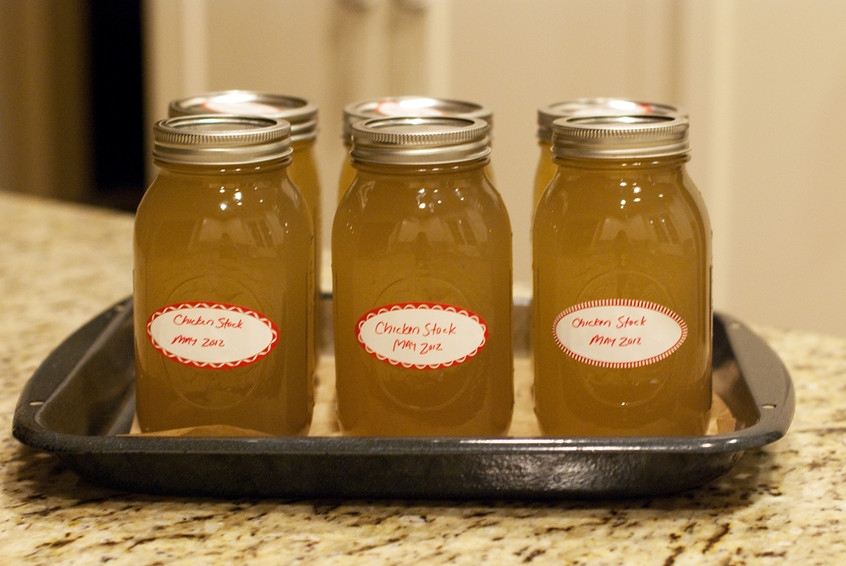We have to give our grandmothers and great great grandmothers credit. They knew how to cook and did it well. They made meals from scratch using homemade broths and sauces. I am sure all of us have one of our grandmother’s recipes and wish we could cook it as well as she did. These recipes bring back so many fond memories.
Homemade chicken stock is one of the simplest things you can do to improve your cooking as well as your health. Gelatin-rich broths not only can heal your body and the common cold but also replenish collagen and improve your joints and repair connective tissues.
Read this detailed article Broth is Beautiful to find out the benefits of gelatin and how important they are to your joints and muscular system. To give you a taste, “Stock contains minerals in a form the body can absorb easily?not just calcium but also magnesium, phosphorus, silicon, sulphur and trace minerals. It contains the broken down material from cartilage and tendons–stuff like chondroitin sulphates and glucosamine, now sold as expensive supplements for arthritis and joint pain.”
This is a simple homemade chicken stock recipe for you to try. It really is quite easy to do and more than worth the effort to pick all the meat off the bones. Do it the night before or mid morning the next day when you are preparing the chicken for lunch. Try the gruyere chicken melt or fresh California chicken salad.
My physical therapist made the comment that his generation has not has as many back and joint problems and, of course, that got me thinking. His generation had home cooked meals every night. They did not eat all this processed food. Maybe they were getting the nutrients and gelatin needed to strengthen their muscles and connective tissues to prevent injuries. Maybe we can start eating more nutrient rich foods and heal ourselves. Chicken and beef broth may be the key. After all, our mothers know best.
I love not wasting any of the bird by making the stock. The Native Americans had the right idea of using everything but I am still not to the point of enjoying heart or tongue yet. Luckily, I only have to remove the giblets and you are welcome to them. I should cook and feed them to the dogs. They would love me for it.
Another benefit of making your own broth, you also can control the amount of sodium and you will not have any MSG like many store bought brands. The herbs add the savory flavoring so you do not need as much salt.
When it is cold season, you will thank yourself for storing the nutrient packed chicken stock. The thyme helps with chest congestion and coughs. Pretty much everything is good for you in this broth.
Make sure you buy a pasture raised or organic chicken because the caged chickens do not have the chance to build strong bones and cartilage since they are locked in a small crate most of their lives. Pasture raised chickens can run and build those muscles as well as graze on whatever food they need to nourish their bodies. To get the maximum benefits from the stock, eat foods rich in Vitamin A and D since they help your body absorb the nutrients. Foods rich in Vitamin D are mushrooms, milk, beef, salmon, shrimp, and butter. Vitamin A rich foods are bok choy, carrots, cantaloupe, liver, herbs, butternut squash, paprika, dark leafy greens, lettuce, apricots, and sweet potatoes.
Directions
1) Get out your large stock pot with a strainer, pour in 1 gallon of spring or filtered water and add the chicken bones, cartilage, skin and left over meat. Add several tablespoons of distilled vinegar and let the bones soak for an hour. If you do not have time to soak them, skip this step. Bring to a boil and simmer for 20 minutes. Skim off any fat on top.

2) Add 3 carrots and 3 or 4 celery stocks chopped into large pieces, half a yellow onion, several cloves of garlic peeled and halved, and fresh oregano, thyme, and rosemary or any other herbs you prefer.
3) Bring to a boil again and add some sea salt or Himalayan Pink Salt for the 84 elements and minerals. 4 or 5 pinches should be enough. Then turn it down to low and simmer for as long as you can but at least 2 hours. I usually simmer the broth until dinner. Some will do this in the morning to have a whole day of simmering.

4) While the broth is simmering, sterilize the mason jars in the dishwasher or boil them. Here are the directions for boiling the jars.
5) Remove the strainer with all the vegetables and bones. Use a measuring cup to pour the broth into your sterilized mason jars. Seal the lids tightly and flip over to allow the rubber to seal better on the lids. You may boil them to store for a long period. After they cool, label them with the date.

Notes:
Broth and stock are essentially the same. The main difference is stock has the nutrients from the bones and cartilage where broth may only contain the vitamins from the meat and skin.
References:
https://www.westonaprice.org/food-features/broth-is-beautiful
https://www.livestrong.com/article/527157-nutrition-of-chicken-stock/
https://www.kitchenstewardship.com/2009/03/26/food-for-thought-health-and-nutrition-of-traditional-homemade-chicken-brothstock/
